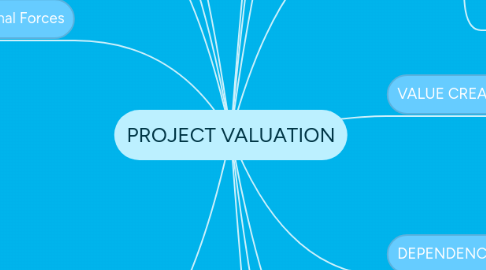
1. Liabilities / Assets
2. MAIN ACCUNTS TO WATCH:
2.1. ASSETS
2.2. LIABILITIES AND EQUITY
2.3. P&L
2.4. HORIZONTAL & VERTICAL ANALISIS
2.4.1. HORIZONTAL ANALISIS
2.4.1.1. changes from one year to another
2.4.2. VERTICAL ANALISIS
2.4.2.1. Do the present structure generates opportunities on the upcoming years?
3. BASIC QUESTIONS
3.1. INDUSTRY
3.2. OBJETIVE
3.2.1. VOLUME
3.2.2. MARGIN
3.3. TIME ISSUES
3.3.1. YTD, YTGO, 4QRB...
4. KPI´S
4.1. Tangible equity
4.2. Liabilities / Equity
4.3. EBITDA / Interests
4.4. EBITDA / Interests + CPLTD
4.5. Quick ratio
4.6. Acid test
4.6.1. (Current Assets – Inventories) / Short term liabilities
4.7. Working capital turnover
4.7.1. Sales / Working capital
5. VALUE CREATION
5.1. SOLVENCY
5.2. LIQUIDITY
5.3. PROFITABILITY
6. PROJECT
6.1. Set of coordinated activities which are related to each other and work for a specific purpose. It’s an idea, and its decision of execution will be based on valuation techniques.
7. Method of valuation
7.1. Set of tools / techniques that allow whether a project is acceptable or not.
8. Economic engineering
8.1. Set of financial and industrial tools for decision making.
9. DEPENDENCY
9.1. Mutually exclusive
9.1.1. Between 2 projects, just one project can be executed and the other must discarded.
9.2. Independent
9.2.1. The execution of a certain project won’t affect the feasibility of another project.
9.3. Interdependent
9.3.1. Complementary: Several projects arise from the selection of a given project
9.3.2. Competitive: A set of projects are proposed while only the best must be selected.
10. PROFILE
10.1. Private
10.1.1. It’s execution will be determined based on the role on the enterprise
10.1.2. New business units
10.1.2.1. creation of a new product or service
10.1.3. Changes in the business units
10.1.3.1. only changes into the means of production.
11. STAGES OF A PROJECT
11.1. idea
11.2. prefeasibility
11.3. investment
11.4. operation
11.5. feedback
12. CANVAS MODEL
13. Data Retrieval & External Forces
13.1. EXTERNAL FORCES
13.1.1. 7 P’s of Marketing
13.1.1.1. PRODUCT
13.1.1.2. PLACE
13.1.1.3. PRICE
13.1.1.4. PROMOTION
13.1.1.5. PEOPLE
13.1.1.6. PROCESS
13.1.1.7. PHYSICAL ENVIRONMENT
14. QUANTITATIVE ANALYSIS
14.1. Net present value
14.1.1. A present value of future cash flows so we can evaluate if its better than the initial investment.
14.1.2. The NPV uses s a discount rate like inflation, sector rate of return, loan interest rate etc.
14.1.3. If the NPV is BIGGER, then it should be accepted, if not it should be rejected
14.2. Internal Rate of Return
14.2.1. With the IRR we can get the breakeven discount rate of any project. It is related with the NPV. If the IRR is lower than the discount rate, the project should not be considered.
14.3. Modified Internal Rate of Return
14.3.1. It assumes different rates for the cash flows
14.4. Return on investment
14.4.1. It evaluates the % of the return provided by future discounted cash flows.
14.5. CAGR
14.5.1. It presents the annual percentage return on a long term investment.
14.6. Return period
14.6.1. It indicates when the project will start to generate returns.

